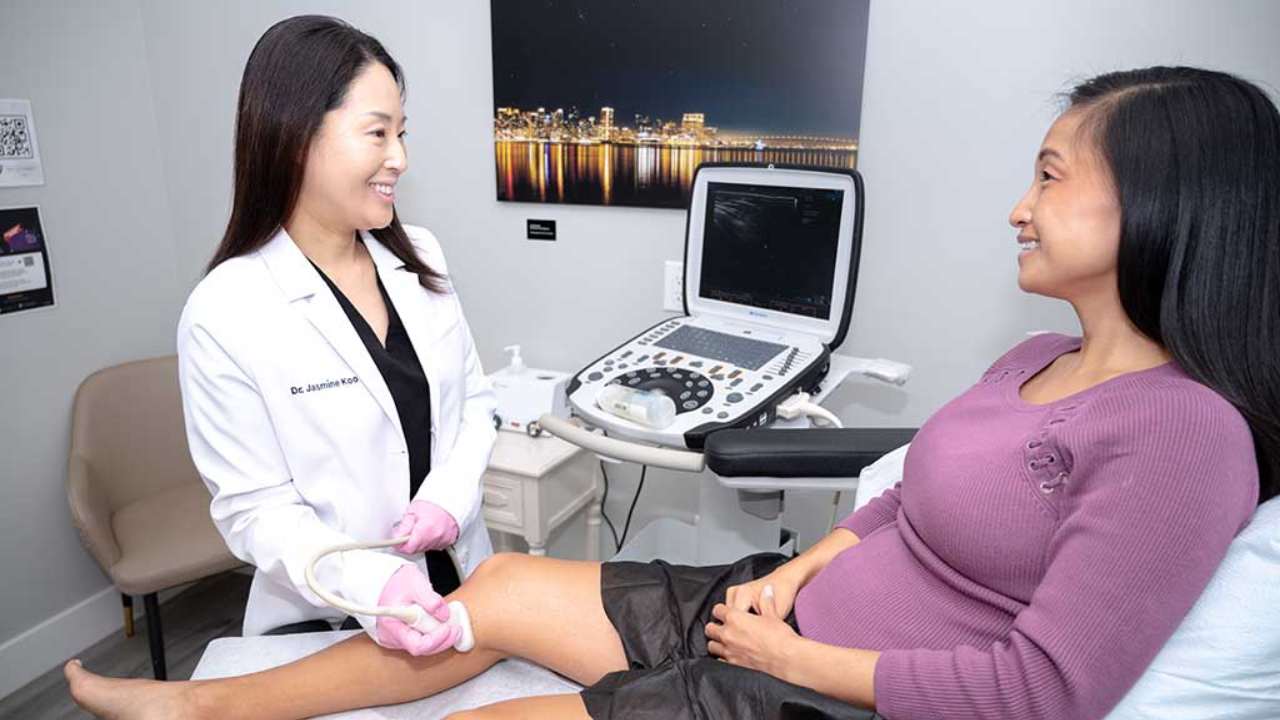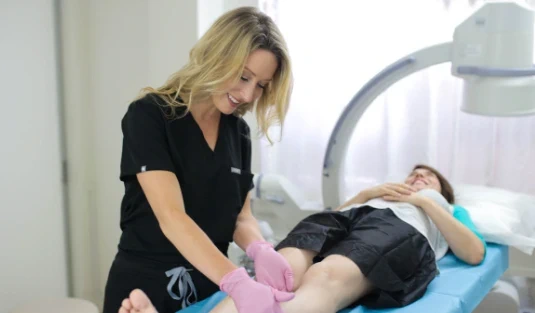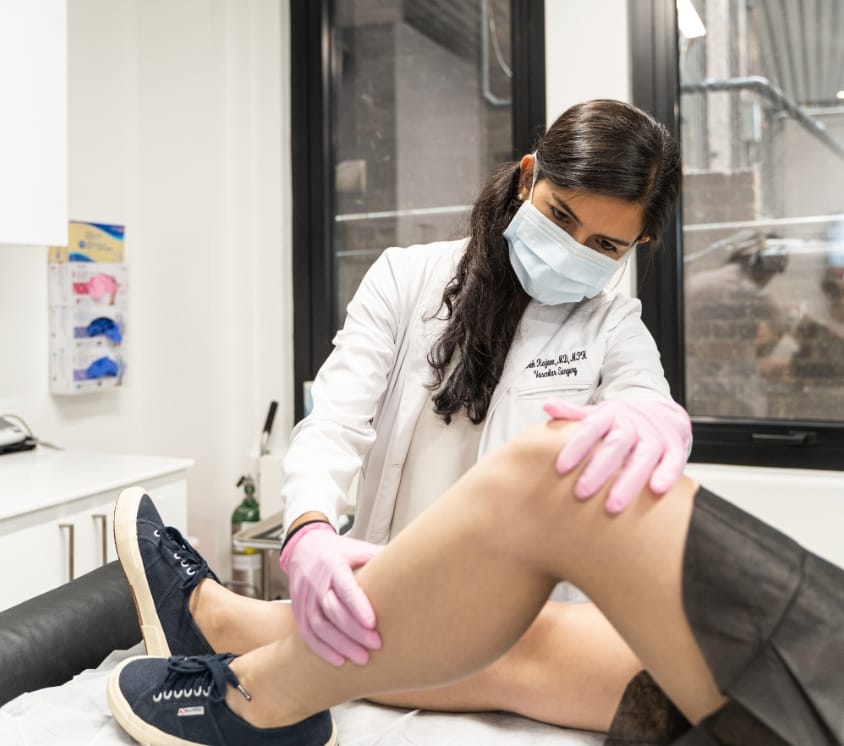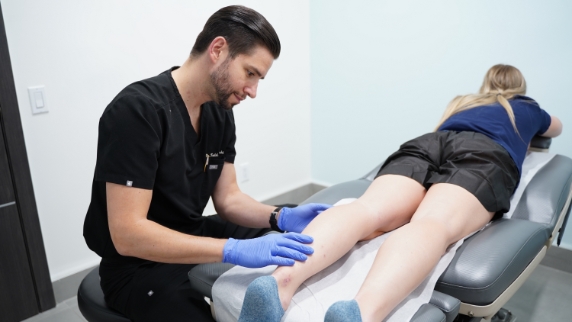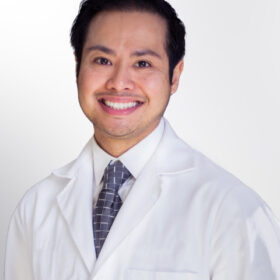People seek varicose vein treatment due to an underlying condition called venous insufficiency or venous reflux disease. This condition occurs when the valves inside the veins fail to function properly. Blood pools in the veins, causing them to enlarge and swell. Varicose and spider veins can result from this condition. Sclerotherapy is effective for spider veins, and foam sclerotherapy is used for larger varicose veins.
Why You Should Act Now
Ignoring venous disease can lead to chronic venous insufficiency (CVI), which results in venous ulcers, edema, bleeding, and severe leg pain. Early treatment prevents complications and improves quality of life.
Common Symptoms of Venous Disease
-
Visible varicose veins and spider veins
-
Leg pain, heaviness, and swelling
-
Itching, burning, and discomfort
-
Skin discoloration and venous ulcers
-
Blood clots (phlebitis or deep vein thrombosis – DVT)
-
Unexplained bleeding from veins
Who Should You Consult?
The best medical professional for vein issues is a vascular doctor or vein specialist. Our board-certified vein experts are trained to diagnose and treat vein conditions using the latest minimally invasive techniques.
Top Treatments for Varicose Veins
1. Sclerotherapy
- Best for: Spider veins and small varicose veins.
- How it works: A sclerosing solution is injected into affected veins, causing them to collapse and fade over time.
- Benefits:
- Quick and painless with no anesthesia required
- Minimally invasive with no downtime
- Highly effective for cosmetic and mild venous disease
2. Radiofrequency Ablation (RFA)
-
Best for: Medium to large varicose veins and chronic venous insufficiency.
-
How it works: A catheter delivers radiofrequency energy, generating heat to collapse and seal diseased veins.
-
Benefits:
-
Minimally invasive, performed under local anesthesia
-
Over 90% success rate
-
Fast recovery—most patients return to normal activities within 24 hours
-
3. VenaSeal
-
Best for: Large varicose veins and venous reflux disease.
-
How it works: A medical-grade adhesive is injected into the vein, permanently sealing it shut.
-
Benefits:
-
No need for compression stockings post-treatment
-
Immediate return to daily activities
-
Painless and requires fewer injections
-
4. Endovenous Laser Ablation (EVLA)
-
Best for: Large varicose veins with significant symptoms.
-
How it works: A fiber-optic laser is inserted into the vein to generate heat, shrinking and sealing it off.
-
Benefits:
-
Highly effective and minimally invasive
-
Short recovery period with minimal discomfort
-
No scarring or stitches required
-
5. ClariVein
-
Best for: Patients seeking a non-thermal treatment for varicose veins.
-
How it works: A mechanochemical catheter delivers medication while rotating to close the vein.
-
Benefits:
-
No heat or risk of nerve damage
-
Minimally invasive and painless
-
Faster recovery than traditional treatments
-
6. Varithena
-
Best for: Medium to large varicose veins requiring foam-based treatment.
-
How it works: A foamed sclerosant is injected to shrink and collapse the vein.
-
Benefits:
-
Quick procedure—takes less than 30 minutes
-
No downtime required
-
Ideal for veins that don’t respond to traditional sclerotherapy
-
Why Choose Our Vein Treatment Clinic?
Our board-certified vein doctors specialize in advanced, minimally invasive treatments for varicose veins and chronic venous insufficiency. We provide:
-
Personalized care with customized treatment plans
-
Insurance verification assistance to maximize your coverage
-
State-of-the-art facilities for cutting-edge vein treatments
-
Minimally invasive procedures with quick recovery times
Schedule Your Consultation Today
Schedule a consultation today if you experience leg pain, swelling, or visible veins. Our specialists will evaluate your condition and recommend the best vein treatment for your needs. We also assist with insurance verification to ensure your treatment is covered whenever possible.








